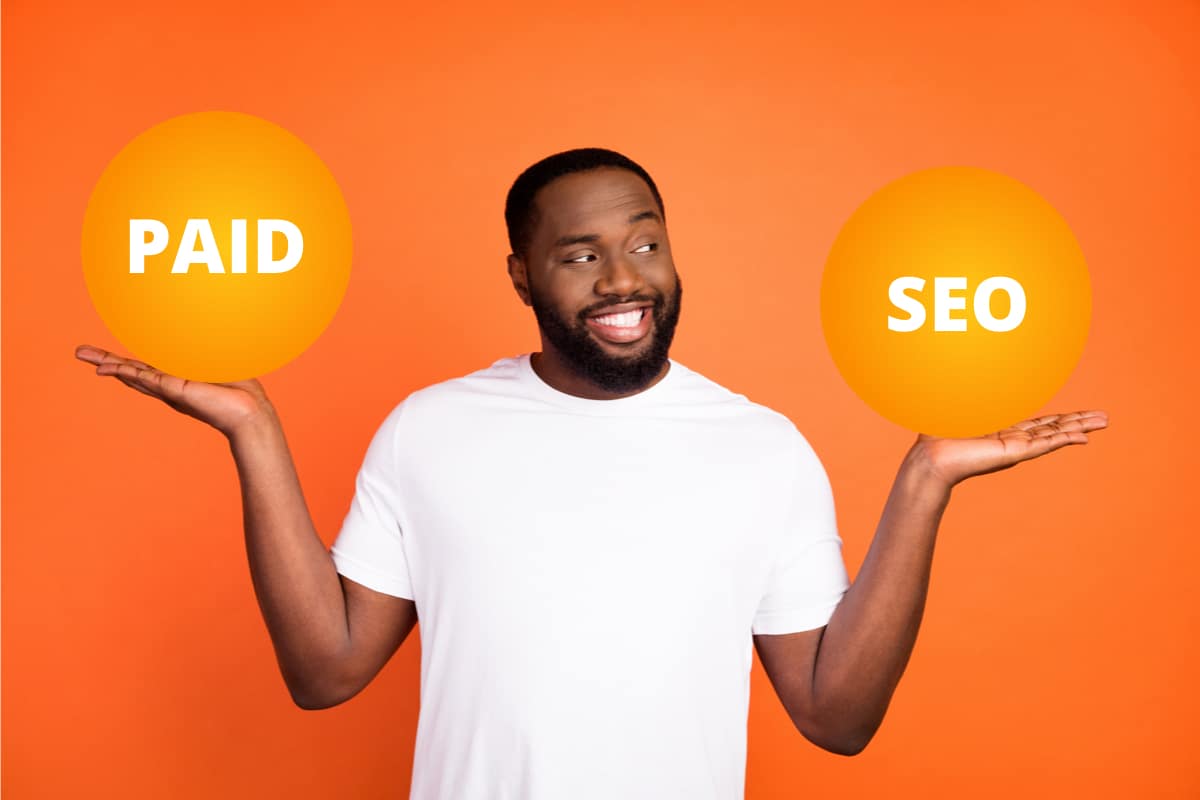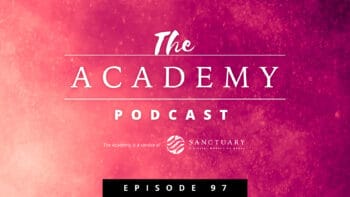
The various ways you can acquire traffic for your website can be divided up into two general categories: paid and organic. As the names would suggest, paid traffic is traffic that you purchase—typically through methods like pay-per-click ads you may run on a search engine such as Google. On the other hand, organic traffic is “natural”, in that those who visit your site are finding it in the traditional search results without an ad being placed.
This is all a review for anyone who is at least a little bit experienced in digital marketing. But this article isn’t about defining paid and organic traffic acquisition. Instead, we are here to talk about which one is more important. When thinking about bringing in more visitors to your site, should you focus on paid or organic methods? We are going to dive deep into this debate in the content below.
The Value of Paid Traffic
Let’s start off our discussion by taking a closer look at paid traffic. The appeal of this form of audience growth is obvious—you can get traffic right away. Pretty much as soon as you activate a paid ad campaign, you will start to gather clicks and bring people to your pages. That’s a powerful capability and it is one of the leading advantages of investing in traffic with a portion of your budget.
Quick spikes in traffic can be useful for many things, depending on the type of business you run. Here are a few examples:
- Testing pages. If you build some new sales pages and you want to see how they perform (maybe you want to test them against each other to see which is best), you can run such tests effectively with paid ads. You’ll be able to control how many people see each page, and how much you are willing to spend on the experiment. By putting even just a few hundred dollars into this kind of testing, you can acquire knowledge that will be hugely valuable in presenting an optimized version of your site to your audience at large.
- Building name recognition. Maybe you want to do nothing more than getting people in your target audience to know your name and what you are all about. For a new brand that needs an identity and a place in the market, this can be an effective way to gain a footing. You aren’t going to want to keep paying for traffic for general brand awareness purposes for very long (it can get expensive, after all) but doing it on occasion on affordable keywords is a useful strategy.
- Running a sale. If you are trying to boost sales around a certain event, (Cyber Monday is a popular example) you might want to run paid ads to bring in extra traffic beyond what you would normally collect organically. This can work out nicely on the bottom line because people may be near the bottom of the buying funnel when they reach your site in this manner. They are primed to buy because of the occasion so you just need to put the right product in front of them at the right price.
The potential uses for paid traffic could just go on and on. Really, the only limit here is your creativity—for any kind of promotional venture you can imagine in your business, it’s likely that paid ads can play a vital role.
The Value of Organic Traffic
On the other side of the coin, we’ll now look at what is so appealing about organic traffic. Of course, the obvious point here is that it’s free, but we need to go a little deeper than that to understand why so many businesses work so hard to land as much organic traffic as possible.
The true value here can be found in the scale that can be achieved with organic visitors. As you rank for more and more keywords, your traffic can grow exponentially without a similar jump in your budget. A solid SEO campaign that builds on itself over time can be a runaway winner that takes a business to an entirely new level of success. Simply put, you might be able to achieve things with organic traffic that just would not happen if you decided to lean on paid audiences alone.
You can also use organic traffic to bring in visitors at various stages of the buyer’s journey or “funnel” as mentioned earlier. Typically (although not always) paid ads are going to look to find people who are getting close to making a purchase. With organic traffic, you can aim for that end of the funnel, but you can also do a lot of good work near the top, getting people to your site who are new to the market and may just be acquiring information. Businesses who can get in early with this portion of the market can build trust and may be well-positioned to make sales down the road. By carefully designing your organic game plan from the start, you can access many different types of people and create a stream of traffic that helps your business become a major player in whatever industry you serve.
Understanding the Drawbacks
It would be dishonest if we were only to present the positives of paid and organic efforts without at least mentioning where these traffic options come up a bit short. Nothing is perfect in marketing, as in life. Both paid and organic traffic have great potential, but seeing both the positives and the negatives will help you deploy these strategies correctly.
First, here are some points on the downsides of paid traffic:
- It can get expensive. This is pretty obvious, of course, but you can quickly spend quite a bit of money on paid traffic if you aren’t careful. Given how the costs can add up, you need to be sure that you are using this traffic effectively enough on the back end to at least break even and hopefully turn a profit on the campaign as a whole.
- Writing copy is tricky. Some organizations will find it difficult to write good copy for their paid ads. If you don’t have anyone in-house to write your ads at a high level, you may need to hire a writer to do the work. That’s a viable approach, but it does add another expense to this process, in addition to paying for the clicks.
- Managing campaigns is time-consuming. It’s a lot of work to actively manage an ad campaign, and skipping out on this task is not an option. Ad campaigns aren’t a matter of “set it and forget it”, but rather, you need to keep up with how your ads are performing and make adjustments along the way to optimize your spend and improve results. If you don’t have the time available in your schedule for this kind of active management, you may struggle with paid campaigns.
Now, let’s turn our spotlight on organic traffic. While you will typically only hear of organic traffic spoken of in glowing terms, there are a couple of drawbacks to keep in mind.
- It’s a ton of work. There is no way around this point. If you want to consistently rank web pages in a competitive industry, you are going to have to put in a ton of work. There will be the matter of creating content that can rank as a starting point, but that’s just the beginning. Then there are other tasks like link building, updating your pages, finding new keywords to target, and on and on. Many businesses wind up outsourcing their SEO efforts because of how much time it takes. You can do it on a DIY basis to save money, but you’ll need to be ready to get down to work.
- Results are slow to come. SEO is a long game, and you shouldn’t expect to see any overnight success as you might find with a paid aid. It’s going to take time to climb the organic rankings when fighting for valuable keywords that offer plenty of competition. Those who stick with SEO for the long run tend to be rewarded, but there is no guarantee of that reward and plenty of hard work and waiting will be required in the meantime.
Matching Traffic Sources to Business Needs
You might not be surprised to hear that we aren’t going to declare a winner in this debate. In the end, there is no one source of traffic that is “better” than the other. Both organic and paid traffic streams are extremely valuable, and most modern businesses will need both of them in order to find their target audience consistently.
Rather than thinking about which is “best” in a vacuum, you need to think about which is best in the context of your business. What are you trying to accomplish? Are you running an established business or just trying to get a new brand off the ground? The form of traffic that you should focus on depends on precisely what you hope to accomplish in the weeks, months, and years to come.
For example, if you have just completed an exciting new product and you want to start securing some sales, paid ads will be the way to go. You can control the flow of traffic this way, and you can test out sales pages and hopefully get your first orders. Building up an SEO campaign around this new product is simply going to take too long to be an effective short-term strategy.
On the other hand, maybe you have a product that is established in your market and you are trying to work your way to the top of the industry. With a long-term focus on organic traffic, you could make that slow and steady climb by moving up the search rankings and bringing in more and more visitors. In that case, playing the waiting game on SEO is worth it, and you should take the time to build an organic strategy that you believe in.
Striking the Right Balance
Ultimately, it’s finding a balance that is going to be key for your organization. You’ll probably want to swim in both pools at the same time, even if one is more of a priority than the other. But those priorities are sure to change over time. During some phases, you’ll focus on paid traffic while keeping your basic SEO activities working in the background. Then that paid campaign will end and you’ll have more time to make sure the organic efforts are getting the attention they need to thrive in the long run.
Master the art of moving your priorities back and forth between these two options and you’ll create a flexible, versatile traffic generation machine that can drive your business forward.
Most Popular Articles

Seeing Favicons in Your Google Search Results? Here’s Why…
Have you noticed anything different in your Google Search results lately? Google added tiny favicon icons to its organic search results in January. It was…

Business Growth and Digital Marketing News & Tips 11-17-24
Are you encouraging and rewarding innovation? Lee Cockerell is the former Executive Vice President of Operations at Walt Disney World. A lover of traditional red…

Business Growth and Digital Marketing News & Tips 11-27-24
A culture of gratitude "Feeling gratitude and not expressing it is like wrapping a present and not giving it." – William Arthur Ward Beyond being…








